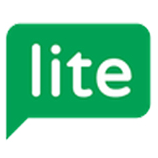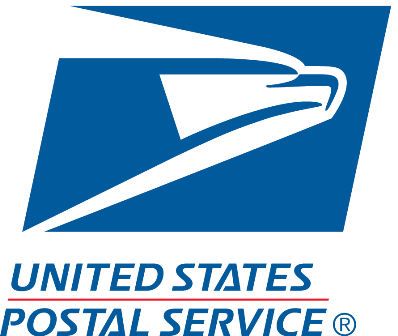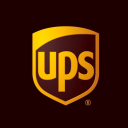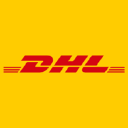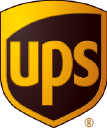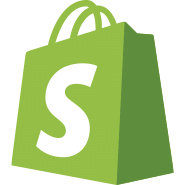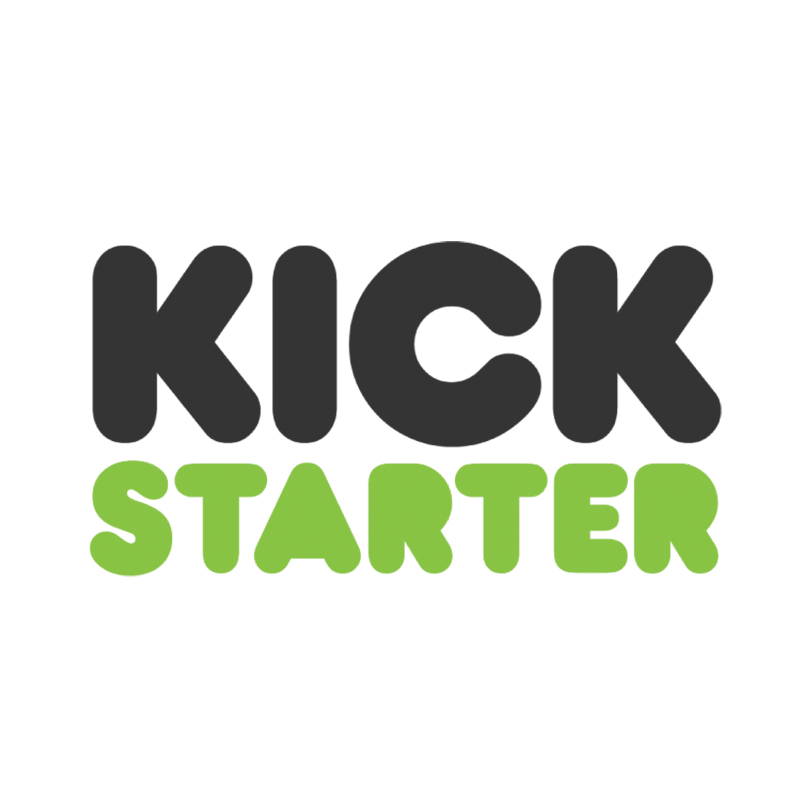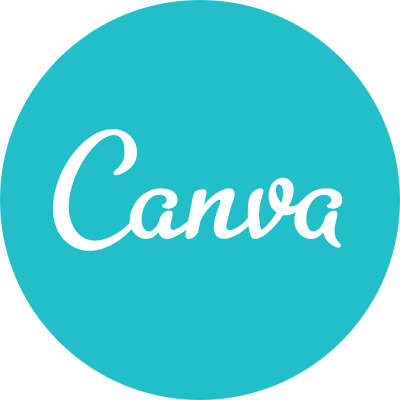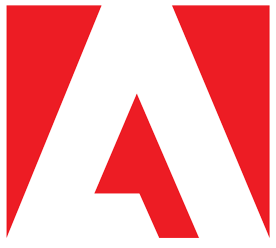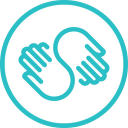How I Built A K9 Outdoor Gear And Content Company After Travelling The World With My Pup
Hello! Who are you and what business did you start?
My name is Devin Kelly, and I am the founder of DOGPAK—a company that makes high-quality outdoor K9 gear. I have traveled all over the world with my pup, Thunder, to 30 different countries and most of the US states, hiking, camping, and adventuring in nearly every kind of climate and terrain imaginable.
During our innumerable adventures together, we tested nearly every piece of outdoor K9 gear on the market, and to my surprise, most of it was problematic in some way.
Everything on the market was ill-fitting, bulky, boring, and often made with cheap, outdated materials. I was eager to use my knowledge as a rigger for skydiving and BASE jumping parachute systems and rock climbing harnesses to design a fresh take on dog backpacks using the same high-quality materials we enjoy in our gear.
Recognizing the importance of a proper fit and a lightweight design, I got my hands on some ultralight material and began the prototyping process. The result was an ultralight, waterproof, and reflective K9 backpack design that would be highly adjustable to fit all shapes of dogs.
Using the same kind of tech we use in human outdoor gear, I opted for the ultralight ROBIC nylon ripstop reinforced with Kevlar threading with a PU coating for weatherproofing. As you might find on a high-quality ski jacket, we also used taped seams and sealed YKK zippers to ensure the gear inside the pack would stay dry in the rain, dew, snow, or when your pup decides it’s time for a dip in the creek!
The result became our flagship product: the Moab Lite K9 hiking harness and daypack for dogs. Its slimmer profile makes it easier for the dog to move uninhibited and its lower capacity helps prevent packing too much weight and bulk on your dog.
After all, dogs aren’t meant to carry heavy loads over long distances, and shedding extra grams counts a lot more for a dog than for a human. Yet despite ultralight backpacks being a popular staple in human hiking gear, the world of outdoor K9 gear was missing such an option. Until now.

What's your backstory and how did you come up with the idea?
I suppose the story of DOGPAK begins as many great stories do: with a boy and his dog. And the story of this particular duo began 13 years ago when I met a little hound dog at a rescue center. I named him Thunder. He was just a puppy then, and I guess I was still a pup too in a way. I never could have anticipated the bond we would develop over the years together, nor could I have fathomed even half of the epic adventures we would embark on.
So the story of DOGPAK begins with the story of Thunder the Wonder Dog. My pup. My best friend. My hero. We have traveled the world together for the last 13 years and the bond we share is indescribable. We have been through it all: rattlesnake bites and bear attacks, barbed wire stitches and raccoon battles, two transcontinental motorcycle rallies, and countless camping trips. And too many skunk incidents.
Thunder is a farm dog, a Mountain Cur: he is happiest when he is outside exploring, and I have tailored my lifestyle to make him happy. We cowboyed on huge cattle ranches in the American West together, and on beautiful sustainable farms where Thunder would make friends with all the animals (except the raccoons, never the raccoons). I have always sought work outdoors where Thunder would be free to roam the way a curious dog with a lot of energy should be able to.
I am a bit of a jack of all trades, but for the past decade, my focus was on training dogs and horses, which suited Thunder just fine because he always had a place to run and play and could accompany me at work.
He learned to be a great cow heeling dog and our work took us to Mexico where we worked with the vaqueros, and later to Nicaragua where I started a Natural Horsemanship clinic.
Later we moved on to Colombia and Peru working with the dancing Paso Fino horses, then to Europe working with show jumpers, and back to the US to work with four-star level Eventing horses.
I then began working for the National Park Service in Sequoia and Kings Canyon National Parks in California where Thunder and I led the mule and horse packing teams to resupply trail maintenance crews deep in the mountainous backcountry.
Over many years, I learned to listen to the animals and to communicate with them. I learned the physics and mechanics of their movement and how to optimize packed loads for the mules to carry.
Because of this deep, intuitive knowledge, I am all too aware of the shortcomings of dog backpack designs that are overly cumbersome and made with heavy, outdated, or cheap materials. It seems like the teams who designed them had little knowledge of how dogs move, their preferred gaits, and how to properly secure any weight the dog is carrying.
Instead of designing slimmer fitting packs that concentrate the weight over the dogs’ shoulders where they’re strongest and secure the load close to the dogs’ median line along the spine, most backpacks out there offer way too much capacity and the result is a sloppy fit that sticks out to the sides so far it begins to shift and teeter, putting additional strain on the dogs’ joints.
That is where the story of DOGPAK comes in.
One day the light bulb switched on and I suddenly had the idea to start a company that would make outdoor gear for dogs. I wanted to create a lifestyle brand dedicated to helping other people develop the same kind of deep bond with their dogs that I share with Thunder. I wanted to honor all that Thunder and I have shared over the years, and I wanted to somehow help spread that spirit to other dog lovers and outdoor enthusiasts.
Due in part to the precarious COVID situation during the summer of 2020, I had time on my hands and needed to fill the hours of the day with something to prevent my impending spiral into insanity. I was stuck in the US awaiting permission from Switzerland to fly over so I could marry my fiancé.
The problem was I had no idea when I might receive my Swiss visa, which made it impractical to look for work—not that anyone was hiring amidst the global pandemic.
Luckily, this newfound pursuit gave me a sense of purpose, so I sectioned my day into various tasks and disciplined myself as best I could as I dove into research. Admittedly, I knew nothing about starting a business, especially a physical product business. I was a cowboy, a vagabond BASE jumper, and a poet who preferred life off the grid.
I had an idea, but how does one go from concept to a physical, tangible product, let alone a whole line of products? Did I need to buy a sewing machine? Would I need to learn to sew better? Should I learn CAD or computer coding?
But I did have at least one advantage. In reflecting on some of my experiences over the years, I realized I had some insight into what makes for quality outdoor equipment, and while some great equipment does exist for dogs, I began thinking of ways to expand or improve on it.
As a parachute rigger, I had some sewing skills and a workable knowledge of a wide range of materials, their strengths and weaknesses, and the physics of building safe and redundant harnesses and anchor systems. I was also an avid climber, wingsuit BASE jumper, skydiver, skier, and mountaineer, which meant that where my knowledge fell short, I had friends in those communities who could guide and mentor me.
So began the arduous process of learning not just one new skill, but a series of interrelated skills all moored to the central idea of entrepreneurship. In learning about market and product research, I developed a landing page explaining the concept behind our dog backpack design and used photos of Thunder wearing the various prototypes I had produced.
After collecting around 500 emails and conducting a series of customer interviews, I felt the idea for an ultralight, waterproof, better-fitting dog backpack was sufficiently validated.
Admittedly, I was nervous to take the blind leap. Sometimes it’s easier to earn a guaranteed paycheck than to invest all your life’s savings into an uncertain future. But I had just immigrated to Switzerland with no job prospects on the horizon, and if there is one thing I am accustomed to, it is taking leaps.
As a wingsuit pilot and BASE jumper, I’ve grappled with the dilemma of uncertainty more times than I can count, and despite my natural fear of heights, time and time again I step up to that precarious edge, take the leap, and find myself soaring.
Take us through the process of building the first version of your product.
Being new to building a physical product business, I was initially clueless as to how to go about turning an idea into a physical prototype and then a finalized product. I was studying different aspects of business every day, and at some point, I came across the term “tech pack.”
A tech pack is a 2D model or diagram of a textile product that includes details like dimensions, measurements, and accessories for the factory to follow.

Because I didn’t have experience with programs like Adobe Illustrator, I hired a freelance worker to help me build the tech pack. I browsed sites like Fiverr and Upwork and tried to commission a tech pack from some of the less expensive freelancers, but the quality was low, the design lacked creativity, and the overall experience left me frustrated.
Then a freelancer named Adam reached out to me and offered his expertise. I nearly scoffed at the $100/hr price tag, but after some convincing, I decided to see what he could offer. It ended up being my first lucky break.
The sooner you start things like customer or product validation, the sooner you can learn whether there is a market fit for your idea or not
The tech pack was intricate and professional, and he even suggested some clever options like adding a self-standing D-ring so people can clip the leash to the harness with one hand. The design was creative and clever and he implemented all the suggestions I gave him about weight and bulk distribution.
The next hurdle was to find and vet a competent factory that would be willing to take on a new project and build a professional prototype—a task that is easier said than done. Turns out, Adam proved himself well worth the cost again because he was able to put me in touch with a professional, mid-size factory with lots of experience making backpacks in Vietnam.
In the previous weeks, I had been unsuccessfully scouring Alibaba for verified suppliers that met all my criteria and would be willing to work with me on this new project. It was a tedious and daunting task, and now, thanks to Adam, I had one foot already in the door with a promising factory in Vietnam.
I have been working with them since, receiving various prototypes and then communicating the changes we wanted to make back to them. They were also able to use the original tech pack made for a size Medium and come up with measurements for two additional sizes, Small and Large, saving me the cost, time, and hassle of making separate tech packs for all sizes.

While I was working on finalizing the prototype design with the factory, I was simultaneously running a landing page to explain to potential customers the features, benefits, and advantages of our dog backpack design. Because we didn’t initially have product photos, I hired another freelancer to come up with a 3D model of how the backpack would look, more or less.
The 3D model was ok, but I felt it lacked professional quality, and I was reluctant to pay the much higher prices for a freelancer who could really add that fine-tuned quality. So instead, we were stuck using this result until we could get some proper product shots of a finalized version of the prototype:

Using these 3D models as placeholders on the landing page until we could get some product shots of a newer prototype resulted in a predictably lower conversion rate than I had hoped for. Eventually, we were able to replace the 3D model shots with photos of a newer, though not yet finalized, version of the Moad Lite K9 backpack:

These photos converted much better than the 3D models, but we still had to decide on the final materials we would be using for Moab Lite, from selecting the proper water-resistant zippers to deciding on whether to use reflective trim or black trim around the edges (we used reflective taping to make it safer and even easier to spot your pup at night).
We received samples of hundreds of different polyester, nylon, and laminated fabrics, focusing on ultralight and highly durable options. Eventually, we selected the ideal fabric to use, an ultralight ROBIC nylon ripstop with Kevlar reinforcing threading, PU coated for an environmentally conscious method of water-proofing.
Next, the factory provided us “lab dips” showcasing the different color options of the dyed fabric, which we knew according to the tech pack, should be close to the Pantone color 7694c. We also received samples of zippers and buckles, and lash-tab patches, and decided on which method we would use to display our logos, which are also reflective.

After about a year of prototyping, iterating, redesigning, and intermittently waiting for new samples to ship from Vietnam, we finalized the entire design of the Moab Lite dog backpack with all its materials and measurements for three different sizes.

With all of this complete, we custom-designed some leashes and collars to follow the theme of the Moab desert since our first dog backpack was called the Moab Lite. We also made collapsible bowls for water or food on the trail.
We are still waiting for the first delivery of the Moab Lite K9 daypacks, and in the meantime, we are looking into designing a whole product line of outdoor K9 gear, like dog jackets, booties, goggles, and more custom-designed collars and leashes based on beautiful iconic landscapes around the world. Meanwhile, here in the valley of Lauterbrunnen, Switzerland, home of DOGPAK headquarters, the dogs of the valley are enjoying testing out the various prototypes we have so far received.

Describe the process of launching the business.
Our launch was more of an ongoing process than a single event. I launched different parts of the business at different times, starting early on with a website through Shopify and the domain name for dogpak.com which had already been in use and required a bit of an investment if I wanted to secure the dot com.
Being a cowboy who had spent much of my life off the grid on remote ranches or in campsites, computer coding, and website design was a skill that eluded me. But rather than hire the design out, I buckled down and began learning as much as I could. Shopify made it relatively easy to build a drag-and-drop website that looked nice, but I did have to learn a bit of custom coding to personalize the site.
A friend of mine is a brilliant graphic designer, and she helped me develop some logos for DOGPAK. The initial logos I developed were laughable in comparison, and I learned that day that a good graphic designer can well be worth the price. Thank god I didn’t go with this:

Instead, my friend helped me come up with both square and text versions of our current logo, as well as a recognizable favicon:

From our logo, we were able to build a brand profile identifying specific brand colors and fonts. In my opinion, the logo helped give DOGPAK a more professional look in the early days, and adding it to our website felt like we were ready to become an authority in the niche of adventuring with dogs. Soon after, I began the DOGPAK blog, which featured everything from tips and tricks for travel to swashbuckling stories of adventures past. It also began our long and ongoing journey of developing SEO.

The site has since been updated a few times, but the overall earthy look is still the driving theme, which I like and feel gives a more personal touch to the aesthetic of the site compared to the corporate colors of some of our competitors’ websites.
We still only have modest traffic on our site, but I hope that once we start distributing our dog backpacks and other items, we will slowly become a more recognizable brand which will drive more traffic to our site.
We decided to run a crowdfunding campaign using Indiegogo to collect enough money through pre-orders of our dog backpack so that we could afford the purchase order from the factory.
The campaign was partly successful in that we did meet our goal, however, I had placed the goal a bit lower than what I was hoping to reach in hopes that we would reach our goal in the first 24-72 hours, and then be able to use that to bolster our paid advertisements with lines like “fully funded in 24 hours!” In retrospect, I think that was short-sighted on my part, and in the future, I will put the goal at an amount that will at least cover the cost of production.
Ultimately we raised about $6,000 which put me in a predicament because it wasn’t enough money to cover the whole PO, and it demonstrated that either our advertising hadn’t been effective or that there wasn’t as much demand for our product as I initially determined. At this point though, I felt like I had already come this far and I might as well see it through.
It was a frustrating, exhausting, and discouraging time for me as I attempted to navigate the predicament of having already invested so much while being acutely aware of a sunk cost fallacy. But the things we regret in life are often the things we don’t do. I envisioned a time in the future when some other company making outdoor K9 gear finds its success and how I would feel deflated knowing that could have been me.
So I put my nose back to the grindstone and persevered under the guise of a renewed determination. Had I failed? Or had I been successful in learning what doesn’t work? It is a matter of perspective I suppose, and foolhardy though it could be, I opted to fund the rest of the project myself.
Only problem was, due to some unforeseen high-ticket circumstances, I was plumb out of money. I reached out to family and friends to borrow an additional few thousand dollars to be able to cover the cost of the PO.
While we had had a social media presence before on Facebook and Instagram, I began to learn about the efficacy of Tiktok and even Twitter. We expanded to include those platforms as well, but with my time spread so thin already, it can be challenging to keep up with the kinds of stats that the algorithm favors.
I do plan to run another crowdfunding campaign in the future, probably using Kickstarter this time. I have since revised some of my marketing strategies in hopes they will prove more fruitful, so time will tell. Once we have our K9 backpacks in hand and ready to ship out, we will be able to distribute a portion of them to influencers and collaborate with them to run contests or giveaways on platforms like Instagram and Tiktok, a strategy that has a proven track record for many small companies.

Since launch, what has worked to attract and retain customers?
Our best means of retaining customers has been to consistently add helpful, high-value content to our blog and to use our email list to send this content every 2 weeks or so.
It is important to be able to divorce your emotions from any logical business decisions you have to make
Our emails consistently have around a 33% open rate, indicating that a large portion of our list is interested parties who are consistently finding value in our content. I intend to keep providing helpful content for free based on my extensive personal experience and the experiences of others, and I hope that the effort shows a degree of authenticity that customers respond positively to.

In addition, we (my wife and I) are maintaining consistency on social media platforms like Facebook, Instagram, Tiktok, and Twitter. In my experience, it seems like Facebook is losing clout and becoming less effective in expanding an audience, however, the audience we already have through Facebook seems to be consistent. Instagram has likewise seemed to plateau in terms of its effectiveness in attracting new, interested people.

I have also used Facebook and Google ads, especially when we were preparing for our Indiegogo launch and during the campaign. Compared to the year prior, I found that those platforms had gotten more expensive while delivering lower results. I know many people’s ROAS was negatively affected by the iOS updates of the last couple of years.
I have also been investing more and more time into learning about and fine-tuning our SEO through things like keyword research, meta tags, page speed, and usability. SEO is a long-term game requiring a consistent investment of time on our side. Alternatively, SEO agencies are available and constantly cold-emailing me, but their pricing structure is almost always beyond our budget, and since it is something we can handle (to some degree) in-house, we have opted for the route of learning and implementing.
How are you doing today and what does the future look like?
We are still mostly pre-revenue while we wait for the first shipment of our Moab Lite dog backpacks to be delivered. Aside from our Indiegogo campaign, we only collect modest amounts of revenue through the few other products we currently offer on our site. The expectation is that things will change once we have the dog backpacks in hand, ready to go.
From there, we will be able to collect more revenue from both D2C and B2B sales, and with that revenue, we can expand our product line. With an expanded product line, we begin to cover all things related to K9 adventure, from content to gear, and we can become a one-stop shop for our niche.
Right now, things are tedious and expensive since we have not been around long enough to have built consumer trust. The hope is that will change once our product is released and we can begin collecting honest customer reviews and showcasing them on our site.
We also dream about one day being in some of the recognizable retail stores in the outdoor gear industry. Having our gear displayed on the shelves of a store like REI would be a dream come true and make all the blood, sweat, and tears worth it in the end. B2B or wholesale would allow us to sell our products in bulk, and while the profit margins would not be nearly as high as retail or D2C, there is value in widespread distribution.
Through starting the business, have you learned anything particularly helpful or advantageous?
Oh, absolutely, but at the cost of substantial time investments and most of my wits. I have learned myriad new skills, each one of which could be a career on its own. SEO, web design, moderate coding, Adobe Illustrator, CAD, email marketing, online advertising, analytics, manufacturing practices, sourcing, supply chain management…the list goes on.
But one drawback to being a solo founder is that I have had to learn all of these things, which means I specialize in none of them. But my philosophy is that an expert is someone who knows more and more about less and less until he knows everything about nothing. And that simply isn’t my style.
As I said before, I am a jack of all trades–the rare Renaissance person who can combine science and creativity, the mathematical with the beautiful. Luckily, I believe the role of a founder is multi-faceted and orients well to people who can think in a wide variety of ways.
What platform/tools do you use for your business?
We started our site using Shopify, which has been a great platform for someone like me who had little experience in web development. It is a bit more expensive than other options, but being based in Switzerland, we were somewhat limited at the time. I think the pricing is fair, however, considering all it provides.
For email, we use Mailerlite, which I have been happy with. It provides almost all the features I need at this point in our business, and it comes at a very reasonable price. While I know some services offer more options, they also come at a higher price, so until we are ready to utilize all a service like that has to offer, we are happy to stay with Mailerlite. It integrates seamlessly with Shopify, and its form/page builder is very intuitive for a computer monkey like me.
We have interviewed a few 3PLs, some very promising, but for now, we handle packaging and shipping in-house.
We also use Google Suite. My business email is run through Gmail, which I pay for monthly, but the cost is reasonable for what it offers.
In my effort to familiarize myself with SEO practices, I have tested a handful of sites like SE Ranking, Semrush, Ahrefs, Nostradamus, and H-Supertools. H-Supertools is free to use and offers several things like keyword research and page speed reports, so I find myself using that over the comparatively expensive plans offered by the aforementioned sites.
What have been the most influential books, podcasts, or other resources?
I have read a handful of books on business, some more helpful than others. The Greatest Salesman in the World is a fun fictional story with some important takeaways. The Lean Startup helped me understand the importance of developing an MVP, getting it to market quickly, and then iterating on that MVP to polish the product.
How to Win Friends and Influence People is a thorough window into understanding the human psyche, and it helped me step out of my introverted comfort zone and become a better in-person communicator.
Never Split the Difference also offers some invaluable insights into how to deal with people–an integral skill in sales, and sales is an integral part of any business. I learned things like the power of “mirroring” in that book.
Advice for other entrepreneurs who want to get started or are just starting out?
Just start. Start somewhere. There are so many aspects of starting a business that regardless of your financial situation or other circumstances, there is always something that you can do. Whether it is starting a website or designing a logo or coming up with a mission statement or running the financials for a business plan, it all needs to be done at some point.
The sooner you start things like customer or product validation, the sooner you can learn whether there is a market fit for your idea or not, and either scrap it or keep running.
Well, you’ll never fly if you don’t make the jump, and that is ok too. Not everyone dreams of flying. But if you dream of flying like I always did, then you need to be willing to take the leap.
Are you looking to hire for certain positions right now?
Potentially. We might be looking to hire this summer for help in areas like social media management, online marketing, SEO maintenance, graphic design, product design, and supply chain management. If you love dogs and believe in our mission of helping other people develop deeper bonds with their dogs through shared adventure, then feel free to contact us here.
Where can we go to learn more?
If you have any questions or comments, drop a comment below!

Download the report and join our email newsletter packed with business ideas and money-making opportunities, backed by real-life case studies.

Download the report and join our email newsletter packed with business ideas and money-making opportunities, backed by real-life case studies.

Download the report and join our email newsletter packed with business ideas and money-making opportunities, backed by real-life case studies.

Download the report and join our email newsletter packed with business ideas and money-making opportunities, backed by real-life case studies.

Download the report and join our email newsletter packed with business ideas and money-making opportunities, backed by real-life case studies.

Download the report and join our email newsletter packed with business ideas and money-making opportunities, backed by real-life case studies.

Download the report and join our email newsletter packed with business ideas and money-making opportunities, backed by real-life case studies.

Download the report and join our email newsletter packed with business ideas and money-making opportunities, backed by real-life case studies.

